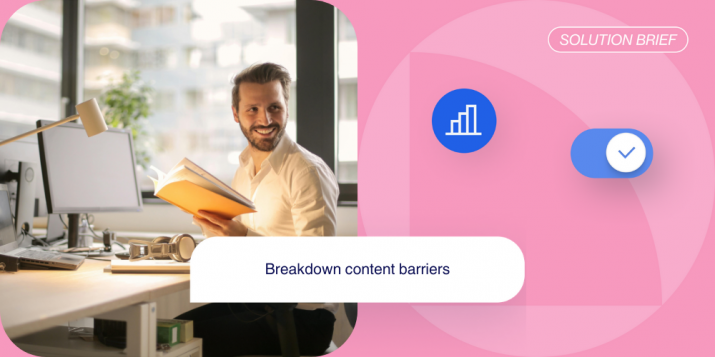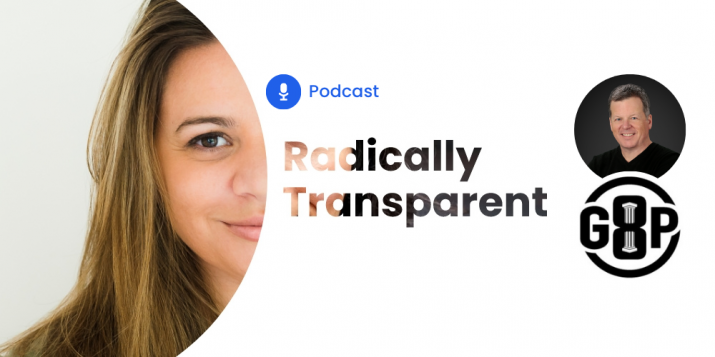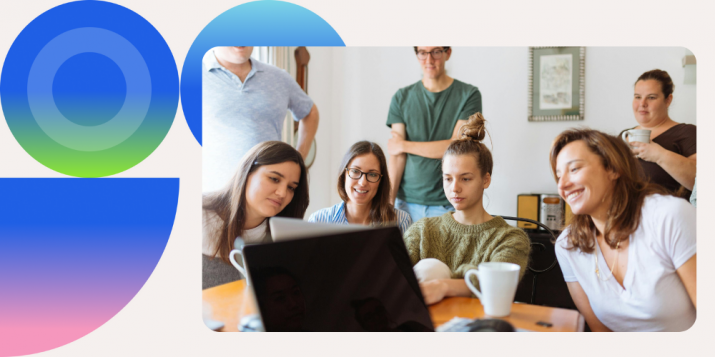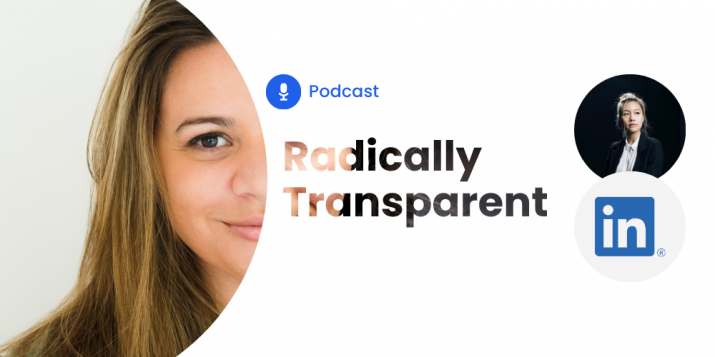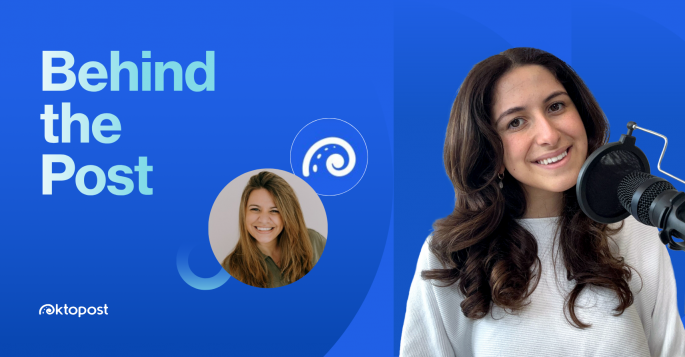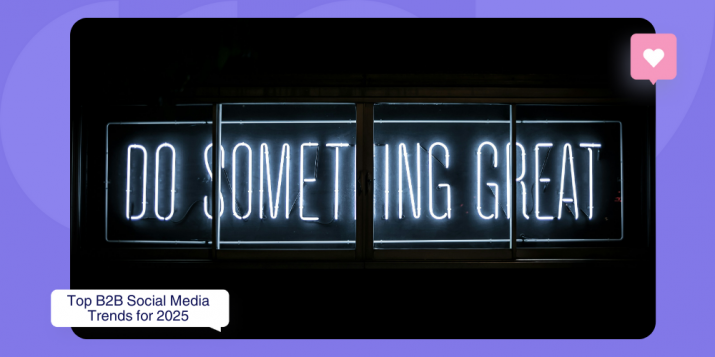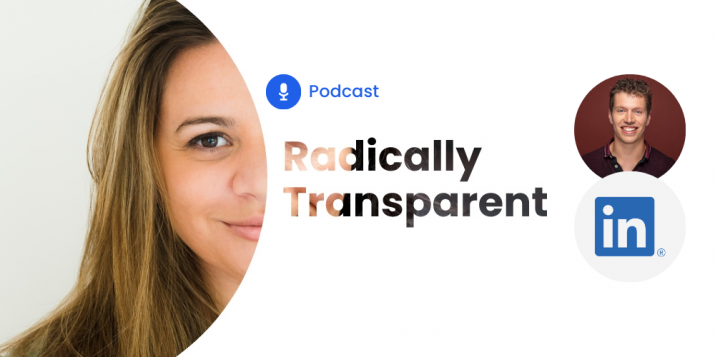
Paid Social Media for B2B: Strategies that Get Results
There are few things in a B2B marketer’s toolkit that can deliver as much ROI as paid social media marketing. With over 750 million professionals currently using LinkedIn, it’s easy to see how success on major social media platforms can lead to a goldmine of opportunity at your fingertips. But what if you could get more out of your current organic social media marketing strategy by using the power of paid ads and sponsored content instead?
While anyone can make organic posts, paid social refers to ads placed by a company that also pays for increased exposure to these ads. Paid social media can enhance your current marketing efforts by driving more sales and better targeting your prospective leads by using social media. If you haven’t already, you should consider joining the 72% of other B2B marketers who have experienced faster results using a paid social media marketing strategy.
In this article, you’ll discover why B2B marketers should be leveraging the power of paid social media marketing and obtain actionable strategies that get results.
What is Paid Social Media for B2B?
If you want to get an even more refined search that pairs you with the right targeted customers, you need to upgrade to paid instead of organic social media marketing. Sponsored ads allow you to generate buzz for your company, service offering, or product promotion on third-party networks where your customers are already spending lots of time.
B2B companies aren’t targeting an individual buyer, like in the B2C world. Instead, they are, or should be, going after entire departments, who may have the purchasing power equivalent to millions of dollars. Philosophically speaking, B2B buyers will likely need to be educated on your service offering and information about your company. Seeing ads in places they frequent is a great way to woo would-be customers.
Why Paid Social Media is a Great Opportunity for B2B
Paid social offers numerous benefits to B2B marketers. Paid social allows businesses to find new ways of interacting with audiences who would otherwise be unaware of their existence. You can use paid efforts to support the principles and messages you’ve already shared on social media, organically. If you’ve created a high-converting content offer, paid social offers an opportunity to spread the word to your desired targets and see an immediate increase in conversions.
On average, it takes eight touchpoints before a buyer is ready to make a purchase. Social media is a common denominator touchpoint for most individuals, and where many B2B buyers go to research companies and products.
Social media is essential for B2B marketers because, at this point, social media has become not only part of the conversation but part of the conversion path. 75% of B2B buyers use social media in their buyer journey. It’s critical for B2B marketers that their message is seen across multiple platforms with enough frequency to persuade buyers to feel informed enough to make a decision.
Paid Social Media Strategies for B2B
Every B2B company needs to identify a clear-cut objective upfront before you launch your paid strategy. Paid social media strategies typically involve narrowing down parameters that define your audience so that you reach your target leads. To get the most from paid social campaigns, try incorporating these five proven strategies.
1. Understand Your Audience
To have the most effective paid social media strategy possible, you need to start with an audience-centric approach. Begin by zeroing in on what your audience really wants. Once you know what your audience is looking for online, you can help them find it easier by tailoring your ads to entice them to buy your products. In this approach, you need to know how many people make a purchasing decision and understand which platforms your audience gravitates towards.
An essential piece of knowledge is familiarizing your marketing team with the people making the purchasing decision. These buyers will need to be empowered with certain essential information before they feel equipped to make the purchase. Knowing more about your audience is part of a well-thought-out paid media strategy because it lets you target them more accurately on social platforms. Keep in mind that most audiences want to know about brand awareness and growth, which they will track over time.
B2B sales cycles can be long, so know what your audience needs for the long haul. To do this well, you’ll need to segment your audience by location, company size, and interests so that you can identify their needs. Once you’ve done this, it’s far easier to address them in your paid social media marketing plan in a way that gives them exactly what they want.
2. Open a Library
Having an in-house content library allows you to be more strategic about your paid social strategies. Your in-house content can become an enticing asset for other interested B2B companies. Since leads are looking for a total solution, researching high-quality content on your website will help them feel confident that your company can deliver results. Educating them about topics relevant to their company’s needs can go a long way in winning their business.
The content in your in-house library doesn’t have to be complicated. Your audience just needs to learn about new products and services and stay up-to-date on the latest news for your company. While it may sound simple, this is the type of content that gets results.
Part of keeping engagement high is resharing and recycling relevant content to your B2B audience. You can create multiple content pieces as part of your in-house library that will help to drive engagement for your various social media marketing campaigns. As you pair content with ad strategy, it creates a winning synergy that helps your content get shared by interested B2B companies to grow your audience.
3. Conquer LinkedIn

LinkedIn is the golden child of social media marketing for B2B marketers. Why? Well, for starters, it is cited as accounting for a jaw-dropping 97% of B2B social media leads online. For this reason, it’s imperative to optimize your paid social media strategy on LinkedIn. One pro tip that you should employ is to leverage the power of Sponsored Posts on LinkedIn as opposed to regular paid ads. Since these get a higher view rate, they can bolster the number of eyeballs on your updates and attract more attention for your B2B company.
Standard LinkedIn ads are great for segmenting your list and targeting key decision-makers. A cost-saving tactic you should employ is using LinkedIn’s helpful Website Demographics tool, where you can see exactly who is engaging with your ads. Knowing their job title, industry, and company information is a crucial stepping stone to understanding your audience and useful for targeting purposes.
Another tactic you can use is to repurpose your best-performing content as a template for creating native ads. Doing it this way helps it blend with your natural tone on LinkedIn and appears more organic than a traditional ad. You can also leverage your most downloaded content to generate buzz for your ad writing. Doing so will help spike your conversion rate because you know that this content has already performed well within your target audience.
4. Short-term Promotions Work Better on Paid Ads
It’s no secret that the B2B news cycle is long and can take multiple months before a sale occurs. Organic social promotion is great if you can wait for this natural cycle to play itself out. However, if you have a time-sensitive launch, online event, or promotion that needs to happen fast, then paid social media ads are going to have a much better chance of succeeding. Since awareness is crucial and needs to be promoted in a timely manner, paying to boost your reach is a great way to quickly get your product update or other timely ads in front of your audience.

5. Go Multichannel
Employing a multichannel strategy gives your campaigns the best chance of success and boosts brand awareness.
Across all platforms, your content strategy should center around motivating your B2B audience with sound logic instead of the emotional impact that B2C marketers use. The trick is to create compelling content that helps your audience understand how your company’s offer can help them solve a problem or how your solution can improve their ROI – and plays well on that particular platform.
Here are some key platforms and associated strategies to consider for your next paid campaign:
Google Display
With 90% of internet users seeing ads on Google, the search engine giant is a no-brainer for B2B marketers. The Google Display Network (GDN) is the largest advertising network on the internet. It allows you to target your audience across multiple platforms strategically.
GDN makes it easy to see your display ads as banners or text boxes on popular pages where B2B decision-makers frequent. They will see your display ads as they browse websites, news platforms, watch YouTube videos, or use Google applications. The multi-faceted impact of GDN ensures that your message is getting seen by the right audience at the right time.
Facebook Ads
74% of professionals have a Facebook page, making it a pretty good bet that your B2B business would be well-served to incorporate Facebook into your paid social media strategy. Facebook ads stand out among paid social media options because they allow marketers to niche down to target their audience by interest, company, and purchasing behaviors at a level that is unmatched on other platforms. Over a billion users are on the platform, which makes it outstanding for getting users to click on an unobtrusive ad.

Facebook Ads is ideal for promoting webinars, whitepapers, and other similar lead generation content because marketers have access to the associated email address of anyone who clicks your ad and converts to downloading your content. Use Facebook Ads handy Ad Relevance Diagnostics tool to see how relevant your ads are to your targeted audience.
Be sure that you are segmenting your audience so you can run multiple campaigns for different decision-makers. This strategy will maximize the effectiveness of your Facebook Ads campaigns.
Twitter Ads
Since Twitter is where the world goes to get information, you can promote brand awareness here that will get seen by movers and shakers in the industry you’re targeting. The platform is second only to LinkedIn in having the highest B2B content marketing visibility.
Using Twitter Ads can help bolster your brand’s credibility, relevance, and give you a nice boost in social monitoring. Twitter moves fast, so having highly engaging ads that lead to real-time conversations with interested audiences is one of the best uses of this platform. You can also leverage the strategic use of hashtags to promote your company and grow your audience base.
Twitter Ads also allows users a pathway for getting off of Twitter and heading to your in-house content. Features to take advantage of include using geo-locations and other ad filters to target the appropriate content to your audiences based on various audience-specific factors.
YouTube
Thanks to YouTube’s skyrocketing popularity in recent years, it has become the number two search engine on the internet. Seven out of 10 B2B buyers watch YouTube videos before purchasing. For B2B marketers, this means that your prospects and leads are looking to engage with your video content. YouTube video ads appeal to your audience because video content is still the most consumed content medium in 2021.
However, it’s vital that the content veers away from simple product pitches and works to keep the audience’s attention by entertainingly sharing valuable information. YouTube also makes it easy to promote your products and videos through display and bumper ads for maximum visibility.
Adopt a Hybridized Social Media Strategy
Keeping up with the latest and greatest social media marketing strategies can be a challenge, even for savvy B2B marketers. Playing the long game is an important part of having an effective strategy. You should strive to adopt a hybridized strategy that incorporates both organic and paid social strategies for the best chances of success.
Doing so will ensure that your audience is always prepped with a steady stream of high-quality content that keeps them up-to-date on exciting changes within your company. However, managing the frequent changes associated with social media marketing can be a significant challenge. That’s why it’s essential you use a social media management tool designed for B2B companies that helps you get the most out of your campaigns by providing you a clear snapshot of your data and analytics, all with easy, push-button automation. When combined with a well-strategized paid social advertising campaign, the sky’s the limit for your B2B marketing ROI.
